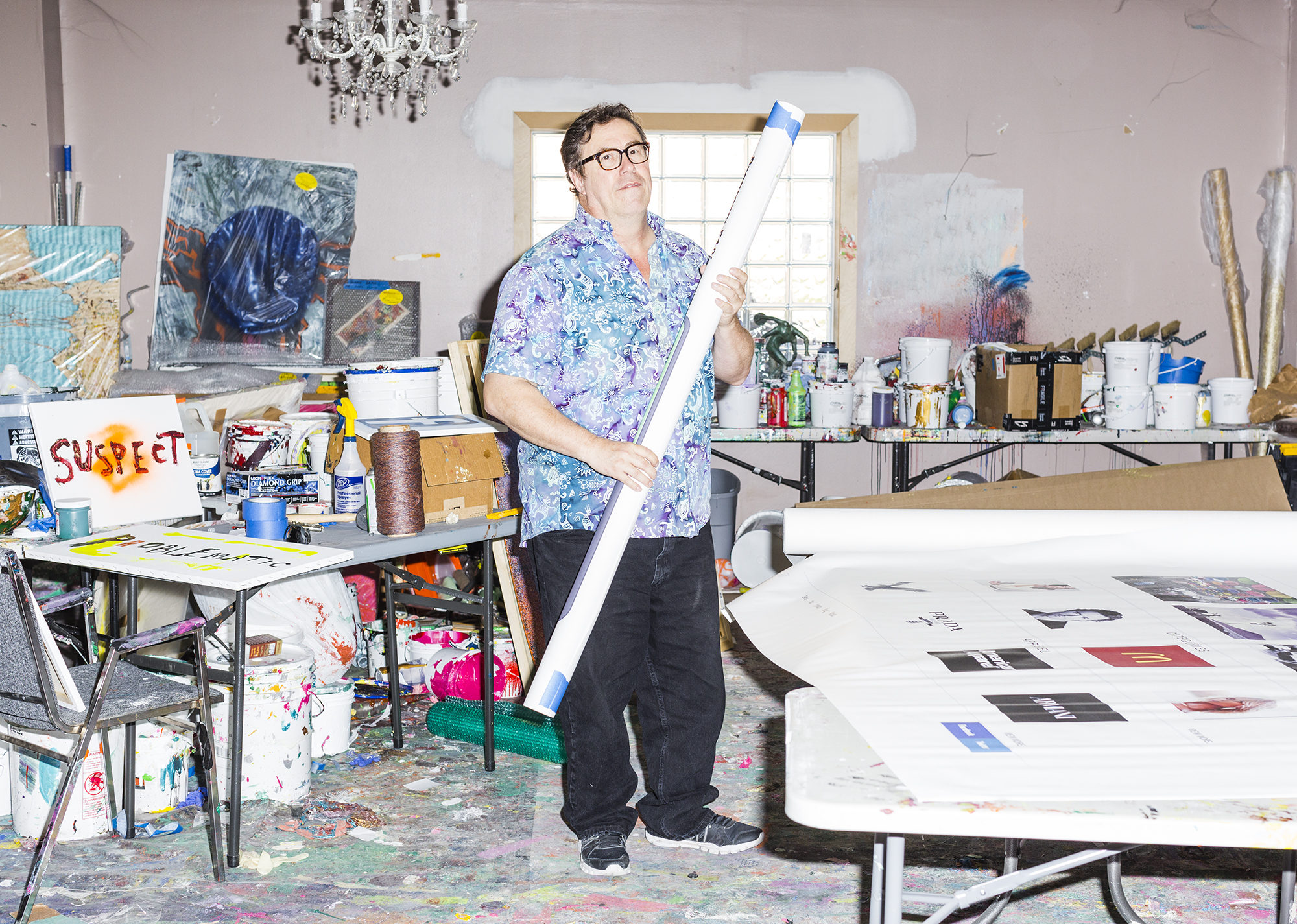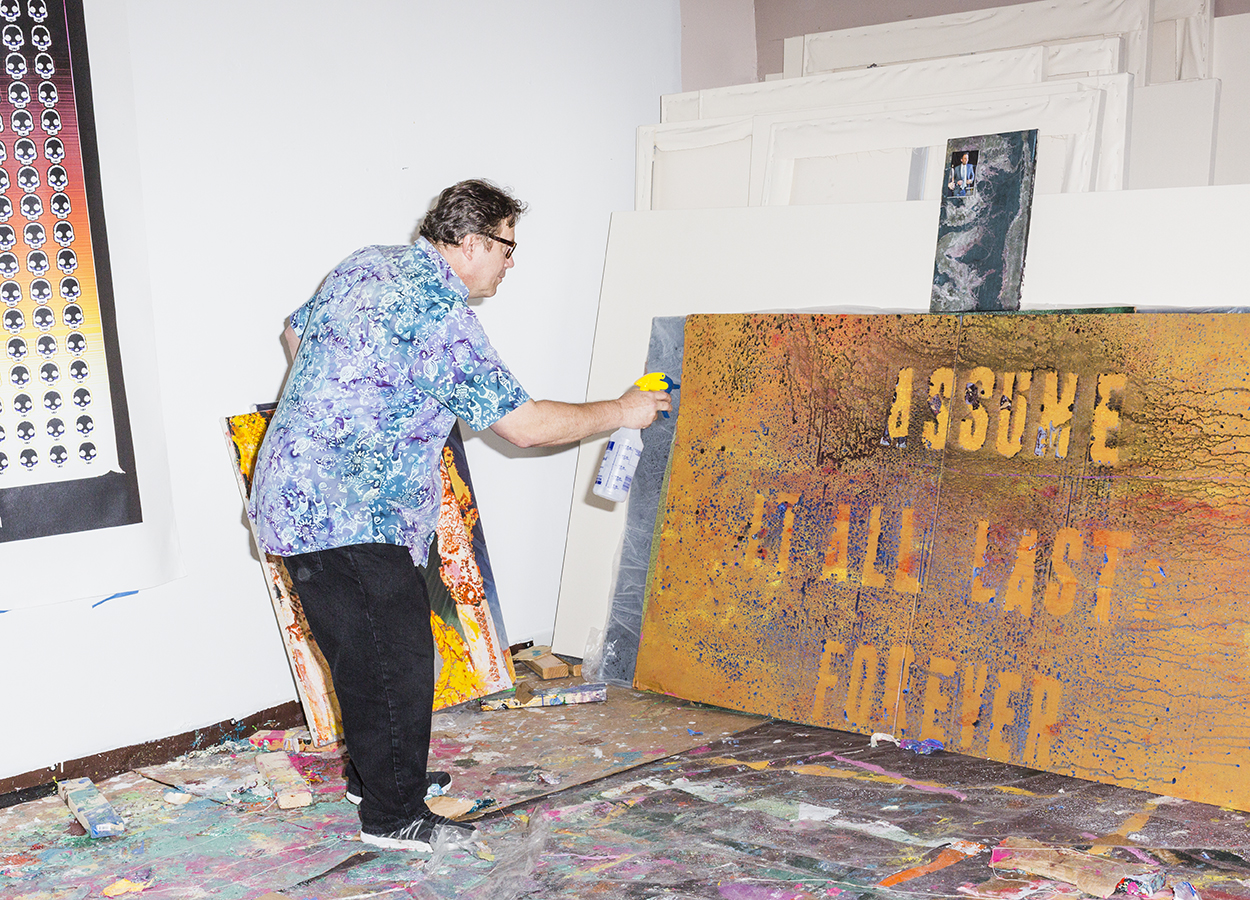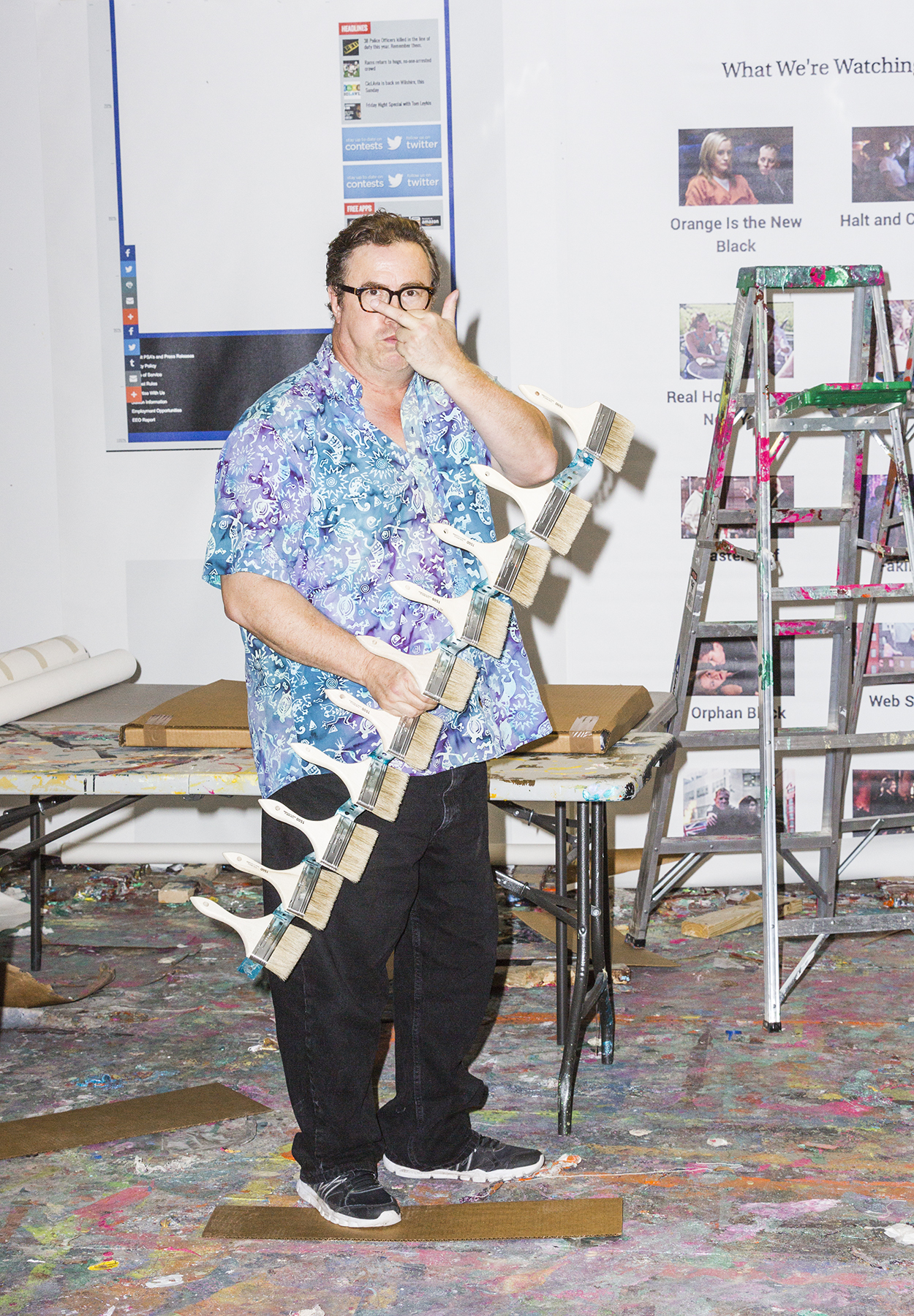“I’m mean as a snake,” the artist Mark Flood says to me within minutes of our first meeting, and since it is the sort of thing that someone who’s genuinely mean would never say, I am immediately put at ease.
We had arranged to get together in Gonzales, Texas, a small town about midway between his home in Houston and mine in Austin, notable mostly because it was the site of the opening battle of the Texas Revolution in 1835. We eat some barbecue, and then go looking for the cannon that fired the first shot, which is apparently in the town’s museum—though we don’t look very hard, and we never find it. Instead, we stroll idly around town, stopping into junk shops and antique stores, occasionally pausing in the shade of a sidewalk awning to argue about other artists, living and dead, about Marxism, about Miley Cyrus, about the motivation behind his own work and how he hates to talk about it. “Understanding is not what I look for in this world,” he says. “I think artists who want to be understood are the most pathetic people.”
It is an improbable conversation with an improbable artist, a lumpen local hero with an international reputation, an attack dog with a noticeably sweet side, the creator of both superabundant, wiseass installations and delicate paintings made by using antique lace as a stencil. As we talk that afternoon, he dissects the art market, and discusses the importance of maintaining his brand. Ordinarily, such talk sets my teeth on edge, but Flood doesn’t seem quite serious. He is simply playing with the notions, testing, pushing back, and he does so without apology. “It’s my job to understand art in all its permutations as it percolates through society,” he says.
“There are a lot of folks who have made disliking Mark Flood a theme,” Bill Arning, the director of the Contemporary Arts Museum Houston, tells me. Nevertheless, Arning happily gave him a one-man show last year. “It was a no-brainer,” he says, “because he’s such a force in the arts community that he’s singlehandedly changed the city’s profile.” And a lot of people came to see it: fans and friends, other Houston artists whose work Flood has promoted, and a general public curious to see what the fuss was about. Flood himself, in a typical gesture, skipped the opening—instead he sent a pair of identical twins who serve as his surrogates on such occasions.
Whatever verities you may think you know about making it in the art world, Flood renders them null. Is it necessary to live in New York or Los Angeles, where you can network and check out the competition? He was born and raised in Houston, and lives there still: “I’m like a medieval peasant who never wanted to go anywhere,” he says. Is it important to have an MFA, to establish your professional credentials? He doesn’t think so. “Art schools … Jesus,” he says. “I hate them with a passion.” Do you need a high-powered dealer to shepherd your work through the marketplace? Flood shows wherever he wants: in a tony space in Chelsea, an underground gallery in San Francisco’s Tenderloin, or at his own art fair. If he has a primary dealer, I don’t know who it is. Does it help to be an appealing young thing? He was in his mid-forties before he really started selling. Now he’s in his late fifties, and just starting to hit his stride, with his first solo museum show at Houston’s Contemporary Art Museum this past summer, and a slew of gallery shows to come.



